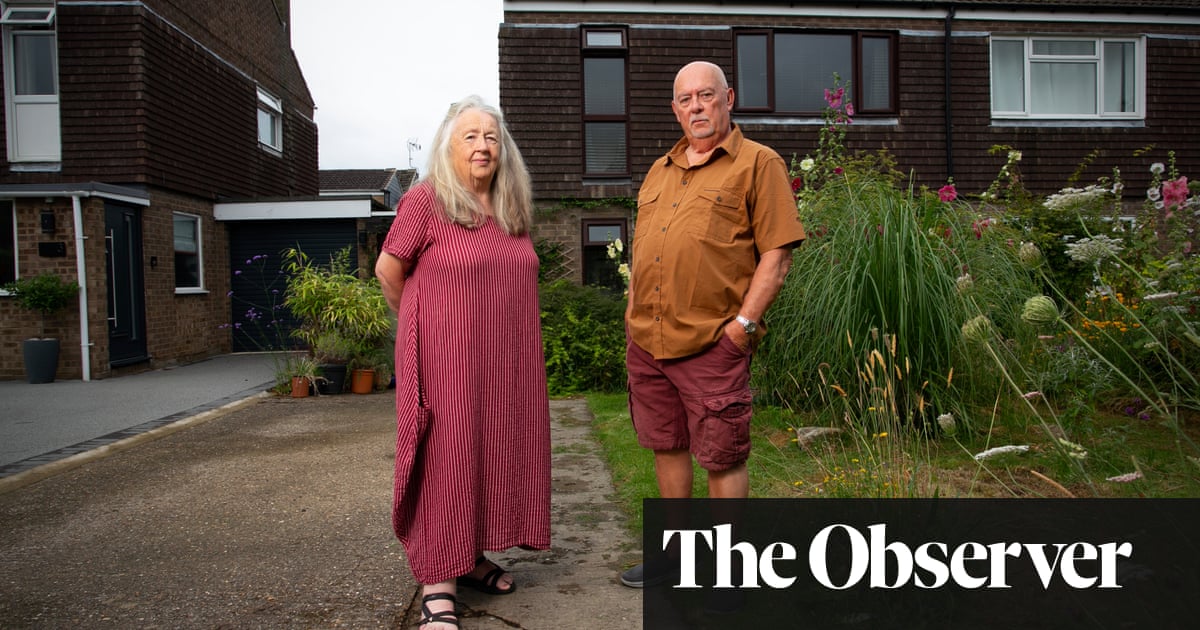Jim Bunce thought he was doing the right thing for his purse and the planet: in 2022, as fuel costs soared, he and his wife decided to improve the energy efficiency of their house.
They discovered that the government had endorsed spray-foam insulation, a quick and unobtrusive technique by which liquid foam is spray-gunned into roof spaces and walls. Their loft was successfully treated at a cost of £2,800 and their gas bills duly fell.
Now, two years on, they have found that, by making their home more energy efficient, they have also made it unsaleable. “We are unable to borrow against it, or potentially to sell it, unless the foam is completely removed,” says Bunce.
The couple had hoped to take out an equity release mortgage to fund their retirement. “No provider will offer equity release on a property with spray-foam insulation due to fears that it damages roof timbers,” he says. “The removal will cost us £3,370 and, apart from the waste of money, there’s the environmental impact of 50 square metres of spray foam being sent to landfill.”
Thousands of other householders are in the same position. It’s estimated that up to 300,000 properties could be affected, some of which had government funding for the work.
A report published in March by the government’s Health and Safety Executive found that condensation could cause 25% of roof timber to decay within five years if spray foam is applied directly to roof tiles, or certain underlays. The general risks increase the further north the property is, because of colder climates.
At the root of the problem are cowboy traders who apply the foam without a full survey or appropriate expertise – but because of lenders’ caution, this is affecting other homeowners who had similar work.
Bunce’s insulation was open-cell spray foam, which is deemed low risk, and he was satisfied with the workmanship. But because surveyors are unable to inspect the roof timbers behind the layers, mortgage lenders tend to issue blanket refusals on properties where any foam is present.
Anita Ryan* faces a bill of more than £6,000 to remove her spray-foam insulation after discovering it rendered her home unsaleable.
“We had insulated our loft conversion 10 years ago and it was signed off by the council with no issues noted. But when we tried to put the house on the market, we were told the value is essentially zero until we have the foam stripped out,” she says.
“Spray foam is still legal, so there is no way to gain compensation, and the industry is not regulated – neither the installation nor the removal – so choices are open to abuse by companies supplying these services.”
Homeowners say they were misled by the government, which exempted the insulation from VAT to promote uptake, as well as issuing grants worth up to two thirds of the installation costs. They feel this suggested the insulation was being endorsed.
They accuse ministers of washing their hands of the consequences after they insisted that it was the responsibility of traders and owners to decide whether to proceed with the work, and that the availability of mortgages is a matter for lenders.
“We are shocked and dismayed that homeowners doing the right thing are now being financially penalised,” says Paula Higgins, chief executive of campaign group HomeOwners Alliance. “They either pay over the odds to remove the spray foam, or remain stuck with homes they will find difficult to remortgage or sell. The government must own up to the failings of this.”
Higgins says that an unregulated sector allows rogue traders to exploit government schemes for their own gain. Some of those who installed substandard insulation have now reinvented themselves as foam removal services and are overcharging victims to extract it.
She is calling for insulation providers to be regulated in the same way as gas technicians to ensure the technology is applied correctly.
Last year, trade body the Property Care Association published a Sprayed Foam Insulation Inspection Protocol to help surveyors determine whether an installation is potentially risky. The idea was to reassure owners and lenders.
However, LiveMore is currently the only equity release lifetime mortgage lender that will lend on properties with foam installed. And there is little sign this will change, according to Andy Wilson, director of equity release consultancy Andy Wilson Financial Services. Even LiveMore insists the insulation be removed within 90 days of a borrower signing a loan contract with it.
“The foam is still being aggressively sold to largely older and potentially vulnerable homeowners,” he says. “Rarely are any downsides mentioned, and the focus is saving on heating costs.”
Customers who have been left with substandard insulation can try claiming installation and removal costs through their bank if they paid by credit card, or bring legal action against the trader.
Firms whose work was subsidised by the now defunct green homes grant have to be registered with the government scheme TrustMark, which has a dispute resolution service, but that will not help those affected by the boycott by lenders, regardless of workmanship.
The spray-foam insulation has been excluded from the government’s latest green retrofit scheme, the Great British Insulation Scheme.
The Department for Energy Security and Net Zero says: “All spray-foam insulation funded by any current government grant must be installed by a TrustMark registered company. Certified installers suggest the most suitable insulation measures, with homeowners deciding which products they want to install.”
Bunce says the experience has destroyed his confidence in any future eco-upgrades to his home.
“As well as being out of pocket, we now find that we have lost trust in anyone selling services,” he says. “We’ve also lost confidence in our ability to make the correct decisions when looking at spending large sums, including who we would engage to remove the foam.”
*Name has been changed
